Single beds are an essential piece of furniture for many households, offering a practical and space-saving solution for children, guest rooms, and smaller bedrooms. This comprehensive guide covers everything you need to know about single beds, including types, benefits, key considerations, a buying guide, pros and cons, usage tips, shopping online, reviews, prices, coupons and discounts, choosing the right one, caring for it, frequently asked questions, and a conclusion.



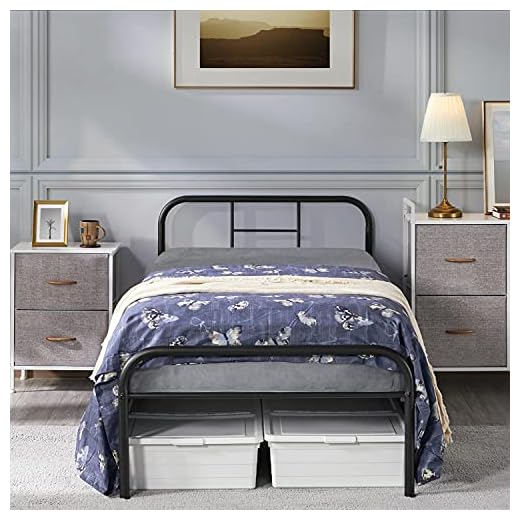

Types of Single Beds
Single beds come in a variety of styles and designs to suit different needs and preferences. Here are the main types:
- Standard Single Bed: Typically measures 90 cm wide by 190 cm long, making it suitable for children, teenagers, and adults in smaller spaces.
- Small Single Bed: Slightly narrower than a standard single, usually measuring 75 cm wide by 190 cm long, ideal for very small bedrooms or for use as a guest bed.
- Day Bed: Functions as both a sofa and a bed, perfect for guest rooms or multipurpose spaces.
- Bunk Bed: Consists of two single beds stacked on top of each other, ideal for siblings sharing a room or for maximising floor space.
- Trundle Bed: Features an additional pull-out bed stored underneath, great for sleepovers or accommodating extra guests.
- Storage Bed: Comes with built-in storage solutions such as drawers or lift-up bases, providing extra space for keeping belongings.
- Loft Bed: Elevated bed with space underneath for a desk, sofa, or additional storage, suitable for maximizing space in smaller rooms.
Benefits of Single Beds
Single beds offer numerous advantages, especially in homes where space and practicality are key considerations:
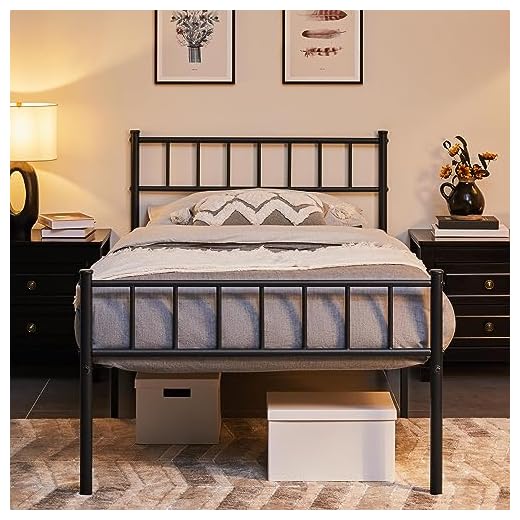
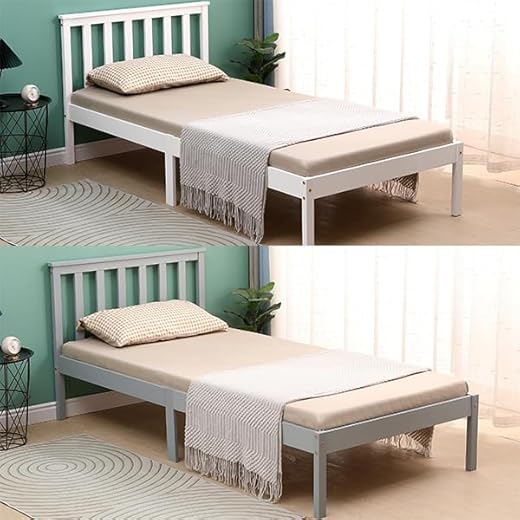
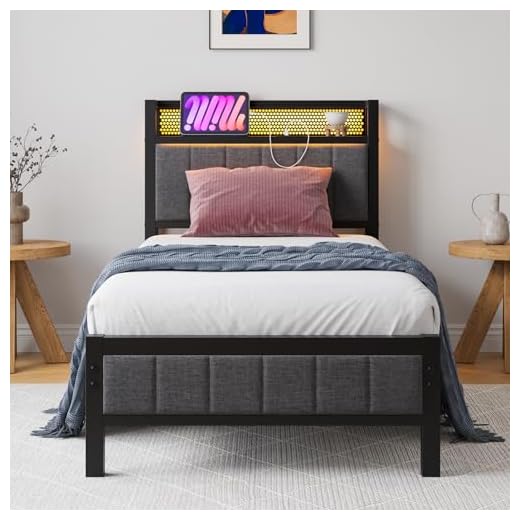




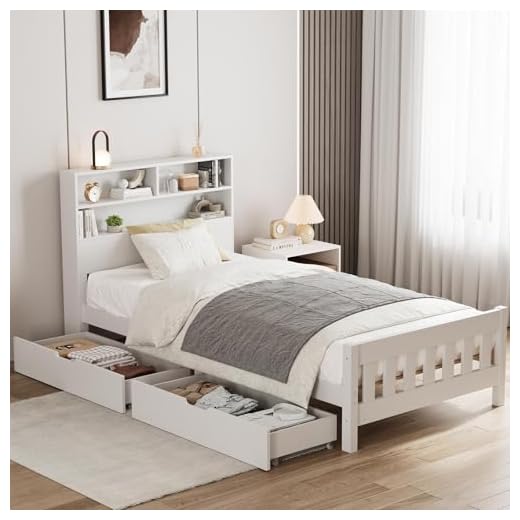




- Space-Saving: Single beds take up less space than larger beds, making them ideal for small bedrooms, guest rooms, and apartments.
- Versatile Use: Suitable for children, teenagers, and adults, single beds can be used in various settings, from kids’ rooms to guest bedrooms.
- Cost-Effective: Generally more affordable than larger beds, making them a budget-friendly option for many households.
- Easy to Move: Lighter and easier to move compared to larger beds, single beds are practical for rearranging rooms or for frequent movers.
- Customisable: Available in a wide range of styles and designs, single beds can be customised with different bed frames, headboards, and bedding to match any décor.
Key Considerations
When choosing a single bed, consider the following factors to ensure it meets your needs and fits your space:
- Room Size: Measure your bedroom to ensure the bed fits comfortably, leaving enough space for other furniture and movement.
- Bed Frame: Choose a frame that complements your bedroom décor and provides the necessary support for the mattress.
- Mattress Type: Select a mattress that suits your comfort preferences, whether it’s memory foam, innerspring, hybrid, or latex.
- Storage Needs: If storage is a concern, look for single beds with built-in storage options like drawers or lift-up bases.
- Usage: Consider who will be using the bed and how often. For instance, a sturdier frame may be needed for daily use by an adult compared to occasional use in a guest room.
- Budget: Determine how much you are willing to spend on both the bed frame and the mattress to find options that fit your budget.
Buying Guide
Purchasing the right single bed involves more than just picking the first one you see. Here’s a detailed buying guide to help you:
- Set a Budget: Determine how much you are willing to spend on a single bed and mattress. Prices can vary widely, so having a budget can narrow down your options.
- Research Brands: Look at different brands and models. Read reviews and compare features to understand what’s available within your budget.
- Test Comfort: If possible, visit stores to test the comfort of various mattresses and bed frames. Pay attention to firmness, support, and overall feel.
- Check Dimensions: Verify the dimensions of the bed and ensure it fits comfortably in your bedroom, leaving space for movement and other furniture.
- Look for Warranties: A good warranty can provide peace of mind, covering any manufacturing defects or issues that may arise after purchase.
Pros and Cons
Before making a purchase, consider the pros and cons of owning a single bed:
Pros:
- Space-Efficient: Single beds are ideal for small rooms, guest rooms, or shared spaces where floor space is limited.
- Cost-Effective: Generally more affordable than larger beds, single beds are a budget-friendly option for many households.
- Versatile: Suitable for all ages, single beds can be used in various settings, from children’s rooms to guest bedrooms.
Cons:
- Limited Space: Single beds may not provide enough space for taller individuals or those who move around a lot during sleep.
- Not Ideal for Couples: Single beds are not suitable for sharing with another adult, making them less versatile for couples.
- Design Limitations: Some single bed designs may be too basic for those seeking more stylish or luxurious options.
Usage Tips
Maximize your enjoyment and the functionality of your single bed with these usage tips:
- Invest in Quality Bedding: Choose high-quality sheets, blankets, and pillows that enhance comfort and complement your bed’s style.
- Regular Cleaning: Clean your mattress and bed frame regularly according to the manufacturer’s care instructions to maintain hygiene and extend longevity.
- Use Mattress Protectors: Protect your mattress from spills, stains, and allergens by using a good-quality mattress protector.
- Rotate the Mattress: Periodically rotate your mattress to ensure even wear and prolong its lifespan.
- Check for Wear and Tear: Inspect your bed frame and mattress regularly for any signs of wear or damage, addressing any issues promptly.
Shopping Online
Online shopping offers convenience and access to a wider range of single beds. Here are some tips for shopping online:
- Read Reviews: Customer reviews can provide insights into the quality and functionality of the bed.
- Check Dimensions: Verify the size of the bed and ensure it fits your space and meets your needs.
- Compare Prices: Look at different websites to compare prices and find the best deals.
- Consider Delivery Costs: Factor in delivery costs, especially for larger items like beds.
- Secure Payments: Use secure payment methods and check the website’s return policy.
Reviews
Reading reviews from other buyers can help you make an informed decision. Look for reviews that mention build quality, comfort, ease of assembly, and overall satisfaction.
- Positive Reviews: Highlight the bed’s comfort, quality of materials, and design.
- Negative Reviews: Pay attention to any common issues such as poor construction, difficult assembly, or lack of stability.
- Verified Purchases: Focus on reviews from verified buyers to ensure authenticity.
Prices
The price of single beds in the UK can vary widely based on factors such as material, brand, and additional features:
- Budget Beds: £100 – £300, often made of basic materials with simple designs.
- Mid-Range Beds: £300 – £700, typically featuring better materials and more sophisticated designs.
- Premium Beds: £700 and above, these beds are often made from high-quality materials and feature intricate designs or custom builds.
Coupons and Discounts
To save on your purchase, keep an eye out for coupons and discounts. Here’s how to find them:
- Seasonal Sales: Look for sales during holidays or end-of-season clearance events.
- Online Discount Codes: Search for discount codes on websites like Groupon or sign up for retailer newsletters for exclusive offers.
- Clearance Sections: Check the clearance sections of online stores for discounted items.
Choosing the Right One
Selecting the perfect single bed involves balancing aesthetics, functionality, and practicality. Consider your specific needs and preferences:
- Room Size: Measure your bedroom to ensure the bed fits comfortably, leaving enough space for other furniture and movement.
- Comfort Needs: Choose a mattress that suits your comfort preferences, whether it’s memory foam, innerspring, hybrid, or latex.
- Style and Design: Select a bed frame that complements your bedroom décor and provides the necessary support for your mattress.
- Storage Solutions: If storage is a concern, look for beds with built-in drawers or other storage options.
- Budget: Determine how much you are willing to spend on both the bed frame and the mattress to find options that fit your budget.
Caring for Your Single Bed
Proper care can extend the life of your single bed. Follow these tips to keep it in good condition:
- Regular Cleaning: Dust and clean the bed frame regularly according to the material’s care instructions to maintain its appearance.
- Protect the Mattress: Use a mattress protector to safeguard against spills, stains, and allergens.
- Rotate the Mattress: Periodically rotate your mattress to ensure even wear and prolong its lifespan.
- Inspect for Damage: Regularly check for any signs of wear or damage to the bed frame and mattress, addressing any issues promptly.
- Follow Manufacturer Instructions: Adhere to the care and maintenance guidelines provided by the manufacturer to ensure optimal performance and longevity.
Frequently Asked Questions (FAQs)
- Q: What are the dimensions of a standard single bed?A: A standard single bed measures 90 cm wide by 190 cm long, providing enough space for one person.
- Q: How do I choose the right mattress for a single bed?A: Consider your comfort preferences, sleep position, and any specific needs such as back support. Common options include memory foam, innerspring, hybrid, and latex mattresses.
- Q: Can I fit a single bed in a small bedroom?A: Yes, single beds are ideal for small bedrooms, guest rooms, and shared spaces where floor space is limited.
- Q: Are single beds suitable for adults?A: Yes, single beds can be suitable for adults, especially in situations where space is limited or for guest rooms. Ensure the mattress provides adequate support and comfort.
- Q: How do I maintain a single bed?A: Regularly clean the bed frame and mattress, use a mattress protector, rotate the mattress periodically, and follow the manufacturer’s care instructions to maintain its condition.
Conclusion
Single beds are a versatile and practical choice for many households, offering space-saving solutions and a range of styles to fit various needs. By considering the different types, benefits, and key considerations, you can make an informed purchase that complements your bedroom’s style and meets your specific requirements. Whether you’re shopping online or in-store, take advantage of reviews, compare prices, and look for discounts to get the best deal. With proper care and maintenance, your single bed will provide comfort and functionality for years to come.
Sweet dreams!



